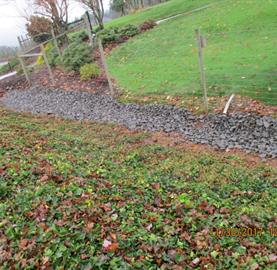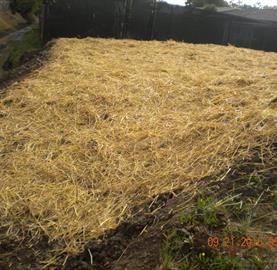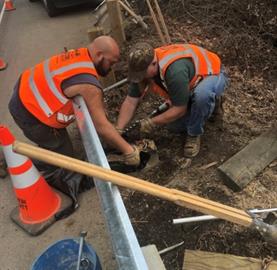Education & Outreach
Stream Tree Program
Providing Native Plants to Shade Waterways
Marion County Environmental Services works with local watershed councils to provide free, native trees and plants for restoration projects along impacted waterways. Contact your local watershed council to find out how to participate in restoration projects.
Why give free trees?
Trees provide natural functions that help improve our water quality. Here are some of our favorites:
- Reduce Water Temperatures
- Provide Erosion Control
- Act as Natural Filter
- Provide Wildlife Habitat
Internal Pollution Prevention Practices
Pollution Prevention
Preventing pollutants from entering waterways is crucial to maintaining water quality. Marion County staff is committed to ensuring maintenance and operations work does not contribute to water pollution. Some of the ways Marion County practices good pollution prevention include:
- using spill containment kits to clean and contain any spills or leaks that occur in the field
- provide trainings on pollution response
- practice Good Housekeeping measures on project sites
BMPs
Marion County Public Works utilizes the Best Management Practices for Clean Water Program for internal maintenance and operations projects. The Best Management Practices (BMP) program provides guidance on reducing impacts to water quality while performing maintenance activities on roads, bridges, and other infrastructure throughout Marion County.
Currently, the BMP program provides guidance on the following activities:
- Road Maintenance
- Vegetation Management
- Ferry Maintenance and Operations
- Bridge Maintenance
- Building and Facility Maintenance
- Fleet Maintenance
- Park Maintenance
The BMPs are evaluated and updated regularly to ensure current best practices are being used.  Click here to see the most recent version of our BMP Crew Manual!
Click here to see the most recent version of our BMP Crew Manual!
Here are some examples of BMPs being used in the field:

|
 |
After cleaning and re-shaping roadside ditches, armoring a ditch with rock is one potential way to prevent further erosion and keep sediment and pollutants from entering waterways. | Other ways to protect water quality after cleaning and re-shaping roadside ditches, includes a process called “skip ditching” which leaves vegetation in place between areas of re-shaping so flowing water can be slowed down and filtered before flowing into waterways. |

|
 |
On active construction sites, keeping disturbed soil in place so it does not get into water is very important. Using erosion control matting or straw is a common practice to prevent erosion.
| Bridges and guardrails have unique challenges to maintenance, as the work often needs to be done over waterways. Crews will contain their work so debris does not enter waterways.
|
Community Outreach
